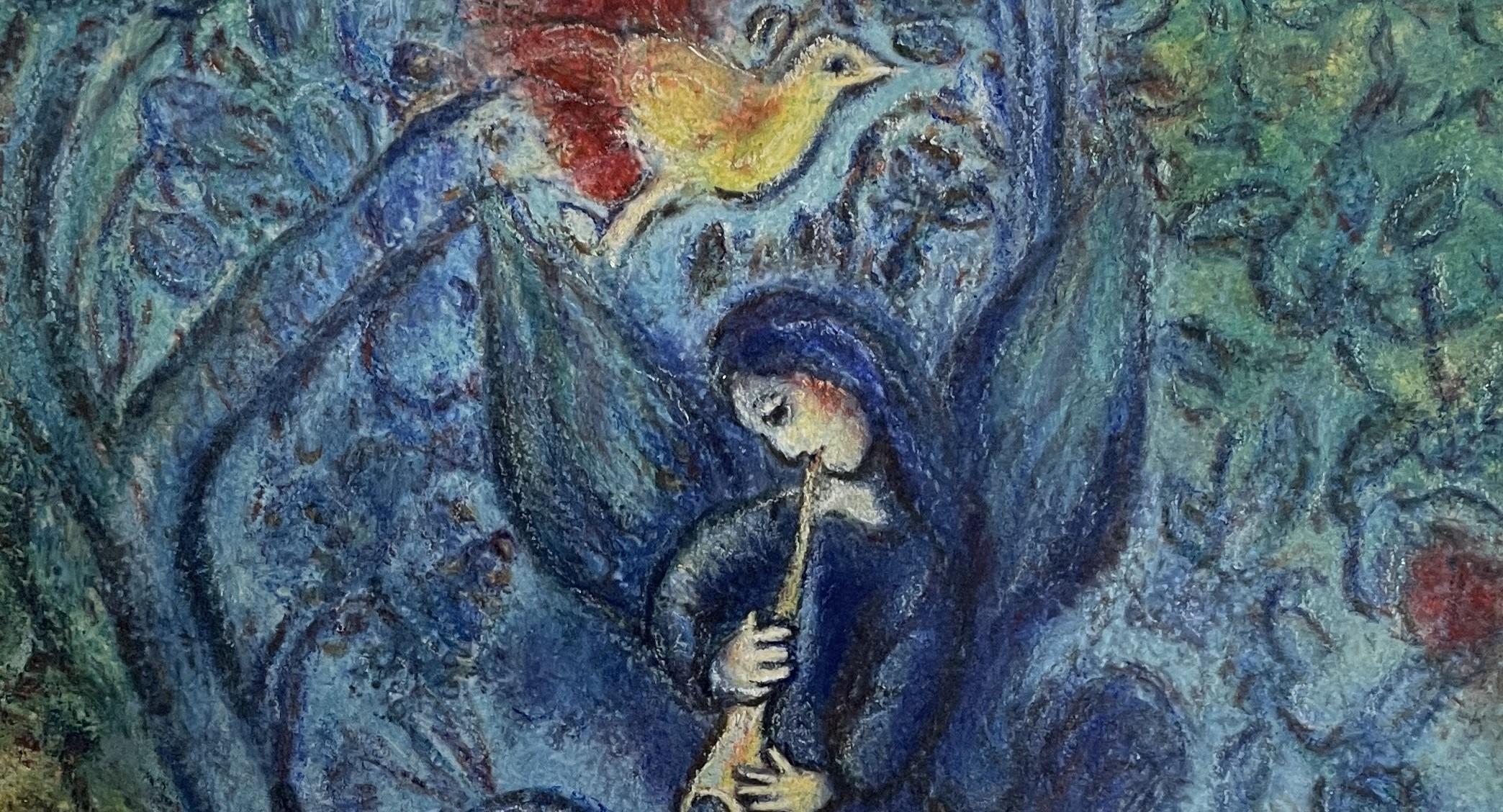日本語-Englishー台灣華語
フェルメール「真珠の耳飾りの少女」
フェルメールほど画集と実物の落差が大きな画家はいない。フェルメールの絵は、実見すると画集から予想されるのとは裏腹に、意外にラフな筆使いで描いてあるのに衝撃を受ける。それでいて丹念な筆使いが、慈しむように飽くことなく重ねられている。写実でありながら、写実とは対極の描写であることに気づかされる。そこには深い落ち着きがあり、卓越した技術を感ぜずにはいられない。フェルメールはまさに奇跡の画家と言っても過言ではない。日蘭交流四百年を記念して門外不出の「真珠の耳飾りの少女」が来日するというので、私はまるで憧れの恋人に逢うように美術展を訪れた。
私は海外事業を統括するためにオランダに持ち株会社を持っていたので、昔はよくアムステルダムに行ったものだ。それは仕事の合間にアムステルダム国立美術館を訪れ、預言者エレミアが肘をついて考え込んでいるレンブラントの素晴らしい絵を観ていた時のことだった。背中が押されたように感じて振り向くと、そこにフェルメールの「牛乳を注ぐ女」があった。丈夫そうな二の腕を出した女が牛乳を注ぐだけの絵なのだが、その絵は凄かった。がっちりとしたおばさんは生命感に溢れ、彼女が注ぐ牛乳はやけにこってりとした感触で流れている。籠の中のパンはとても堅そうな物質感を伝えている。白壁に打ち付けられた釘は、朝の光の中に硬質に輝いている。そこには揺るぎ無い存在感があった。その絵が持つ深みにはレンブラントさえも寄せつけないものがあった。私はその日フェルメールに開眼した。
「牛乳を注ぐ女」は凄すぎて私には描けなかった。背景の白壁の質感がやけに難しそうだった。それに描くとなるとおばさんはネックだなと思った。それに比べて「真珠の耳飾りの少女」は可憐で、描いてと誘われているようだ。美術展の会場はとにかく混んでいた。やっとの思いで真珠の耳飾りの少女に辿り着いて眺めていると、隣のおばさんが、「やっぱりレオナルドって凄いね」と言っていたのには、とりわけ驚いた。こんなおばさんまで観にきている日本という国はつくづく立派だけれど、だからこんなに混んでいるのだと少し腹が立った。どうせ描くならやっぱりおばさんはやめて、少女にしよう。
この絵はフェルメールの作品にしては珍しく、はっきりとこちらに視線を向けている。背後から呼び止められた少女がふと立ち止まり、こちらを振り向いた、日常のごくありふれた瞬間を切り取ったような絵だ。浮世絵の有名な「見返り美人」にも同じようなポーズがあったが、そこには振り向く前から振り向いた直後までのほんのわずかな時間が、一枚の絵の中に動画のように組み込まれている。この少女は一説には若くして死んだ彼の娘ではないかと言われている。フェルメールは記憶の中にある少女の姿を描こうとしたのだろうか。ラピスラズリの鮮やかな青が高貴な雰囲気を醸し出しているこの絵は、明暗が単純に構成され、明快に描かれている。瞳と唇と真珠にひときわ明るいハイライトが施されている。濡れたような唇は何か言いたげに軽く開いている。鼻と頬の境目がなく、鼻筋がはっきりしない。天国の商人から買った真珠なのかもしれないが、少女が付けている真珠は大きすぎて、イミテーションの真珠に違いない。それでもフェルメールの少女は全体には可憐である。描いていると青と黄色のバランスがとても気になる。ターバンの青に服の黄色。ターバンの中にも青地に交じり合う黄色い模様が絶妙である。フェルメールはむしろ「青と黄色のハーモニー」を題材にしたのかもしれない。そういえばオランダ人画家はゴッホといいモンドリアンといい黄色にこだわる。一方あれだけ背景にこだわるフェルメールがこの絵に限り黒一色にしたのはどうしたことか。やはり天国の娘を偲んでいるのだろうか。
それにしても黒の質感が凄い。塗りつぶされただけの背景なのに、マネの黒を凌駕している。私のフェルメールは歯ブラシでごしごしと磨いて質感を出している。パステル画を歯ブラシで描くのは、私だけのちょっとした秘密の技法だ。そう言えばレオナルドのチェチリアの背景も黒一色である。もしかしたらフェルメールは、黒い背景に「青と赤のハーモニー」を描いたレオナルドのチェチリアに対抗して「青いターバンの少女」を描いたのかもしれない。展覧会場のおばちゃんがフェルメールの絵を見て、やっぱりレオナルドは凄いねと言っていたのには、深い意味があったのかもしれない。
The Girl with a Blue Turban (Girl with a Pearl Earring)
No artist has as significant a disparity between their art books and the actual works as Vermeer. One is struck by how roughly painted his works are in person, contrary to the smooth finish one might expect from the art books. Yet, this roughness is layered with a meticulous care that seems endless and nurturing. Despite being realistic, his works reveal a depiction that is the polar opposite of realism, imbued with a profound tranquility and an undeniable mastery of technique. It’s no exaggeration to call Vermeer a miraculous artist. In commemoration of 400 years of Dutch-Japanese relations, the ‘Girl with a Pearl Earring,’ usually kept from public view, was brought to Japan, and I visited the exhibition as eagerly as one would a beloved.
I used to frequently visit Amsterdam because I had a holding company in the Netherlands for overseeing our international business. During those visits, I would find time to admire Rembrandt’s magnificent painting of the Prophet Jeremiah in deep thought at the Rijksmuseum. Once, as I felt a push on my back and turned around, I was confronted by Vermeer’s ‘The Milkmaid.’ It’s a simple scene of a sturdy woman pouring milk, but the painting is extraordinary. The robust woman is brimming with life, and the milk she pours seems unusually thick. The bread in the basket conveys a very tangible hardness. The nail hammered into the white wall shines metallically in the morning light, asserting an unwavering presence. This painting had a depth even Rembrandt couldn’t approach. That day, I had an epiphany about Vermeer.
‘The Milkmaid’ was too incredible for me to attempt. The texture of the white wall in the background seemed particularly challenging. And if I were to paint it, the woman seemed like a hurdle. By contrast, the ‘Girl with a Pearl Earring’ seemed delicate and as if she was inviting me to paint her. The exhibition venue was extremely crowded. When I finally reached the ‘Girl with a Pearl Earring’ and was looking at her, I was particularly surprised to hear a woman next to me say, ‘Leonardo is really amazing, isn’t he?’ It’s commendable that even Japan, with such visitors, holds such exhibitions, but it also frustrated me how crowded it was. If I were to paint, I decided to choose the girl over the woman.
This painting is unusual for Vermeer, as the girl looks directly at the viewer. It captures an ordinary moment, as if a girl called from behind suddenly stops and turns around. This pose is similar to the famous ‘Beauty Looking Back’ in Ukiyo-e, where a brief moment from just before turning to just after is captured within a single frame, almost like animation. Some say the girl might be Vermeer’s daughter, who died young. Perhaps Vermeer attempted to capture the image of the girl from his memory. The vivid lapis lazuli blue lends a noble air to the painting, with simple contrasts of light and dark, and highlights are particularly bright on her eyes, lips, and pearl. Her moist lips seem slightly parted, as if about to speak, with no clear delineation between her nose and cheeks, and her nose bridge is indistinct. The pearl she wears, possibly too large to be real, might suggest it’s an imitation. Yet, the overall impression of Vermeer’s girl remains delicate.
When painting, the balance between blue and yellow catches my attention. The blue of the turban and the yellow of the dress, with yellow patterns mixing with the blue of the turban, are exquisite. Vermeer might have focused on the ‘harmony of blue and yellow’ as his theme. Dutch painters like Van Gogh and Mondrian had a penchant for yellow. It’s curious that Vermeer chose a solid black background for this painting alone. Perhaps he was reminiscing about his daughter in heaven. Nonetheless, the texture of the black is impressive. Despite being a simple background, it surpasses even the black used by Manet. My technique involves vigorously brushing with a toothbrush to achieve this texture, a secret technique of mine for pastel drawings. It reminds me of Leonardo’s Cecilia, also set against a black background. Perhaps Vermeer, in creating ‘Girl with a Blue Turban,’ was competing with Leonardo’s Cecilia, which featured ‘the harmony of blue and red.’ The lady at the exhibition commenting on Leonardo’s greatness after seeing Vermeer’s work might have had a deeper meaning.”
維梅爾
藍色頭巾的少女(珍珠耳環的少女)
沒有哪位畫家的畫集和實物之間的差異比維梅爾更大。當人們親眼看到維梅爾的畫時,會對其筆觸之粗糙,與畫集中預期的細膩感到震驚,這種粗糙背後卻又蘊含著無盡的細膩與呵護。這些作品既寫實,又透露出與寫實主義截然相反的描繪,使人感受到一種深沉的平靜和卓越的技術。稱維梅爾為奇蹟般的畫家一點也不為過。為了紀念荷蘭與日本交流四百年,一直未對外展出的「珍珠耳環的少女」來到了日本,我像是去見心儀的戀人一樣參觀了這場展覽。
因為我在荷蘭有一家控股公司來統籌海外業務,所以我以前經常去阿姆斯特丹。那是在工作之餘拜訪阿姆斯特丹國家美術館,欣賞著雷布蘭特筆下正深思的先知耶利米時的情景。當我感到有如被人從背後推了一下,回頭一看,就看到了維梅爾的「倒牛奶的女人」。這幅僅描繪一個看似健壯的女人倒牛奶的畫面,卻非常驚人。那位結實的女人充滿了生命力,她倒出的牛奶似乎異常濃稠。籠中的麵包傳達出一種非常堅硬的質感。白牆上的釘子在晨光中堅硬地閃耀著。那裏存在著不可動搖的存在感。即使是雷布蘭特也無法接近這幅畫深沉的內涵。那天,我對維梅爾有了全新的認識。
「倒牛奶的女人」太過驚人,我無法描繪它。背景中的白牆質感看起來異常困難。而且一旦描繪,那位女士似乎會成為一個問題。相比之下,「珍珠耳環的少女」顯得更加纖細,彷彿邀請我描繪她。美術展的會場非常擁擠。當我終於看到珍珠耳環的少女時,旁邊的一位女士說「畢竟,達文西真的很了不起」,這讓我特別驚訝。即使這樣的女士也來觀看,這個國家真的很了不起,但這也讓我有些惱火,因為展覽太過擁擠。如果要畫,我決定還是畫少女吧。
這幅畫對於維梅爾的作品來說是不尋常的,因為少女直接面向觀眾。這是一幅捕捉到一個日常而平凡瞬間的畫面,仿佛是一個被從背後叫住的少女突然停下來,轉過頭來看向我們。在浮世繪中著名的「回眸美人」也有類似的姿態,但那裡包含了從轉身前到轉身後僅僅一瞬間的時間,如同動畫一般融入一張畫中。有說法認為這位少女可能是維梅爾年幼去世的女兒。維梅爾是否試圖描繪出他記憶中的少女形象?這幅畫中的瑰麗藍色石礦為畫面增添了高貴的氣息,明暗對比簡單而明快。眼睛、嘴唇和珍珠上的亮點特別明亮。濕潤的嘴唇似乎輕輕張開,好像想說些什麼。鼻子和臉頰之間沒有明顯的界限,鼻梁也不明顯。她戴的珍珠可能太大了,看起來像是仿製品。儘管如此,維梅爾的少女整體上仍然顯得非常纖細。
當我畫畫時,藍色和黃色的平衡非常吸引我。頭巾的藍色與衣服的黃色。頭巾中還有藍底交織的黃色圖案,非常精妙。維梅爾或許是將「藍色與黃色的和諧」作為他的主題。說起來,荷蘭畫家無論是梵高還是蒙德里安都特別偏愛黃色。然而,維梅爾對背景如此講究,卻在這幅畫中選擇了純黑色,這是為了什麼呢?也許是在追憶天國中的女兒吧。但即使是僅僅塗滿的背景,黑色的質感也是驚人的。我的維梅爾作品是用牙刷來刷洗出質感的。用牙刷畫粉彩畫,這是我自己的一個小秘密技巧。說起來,達文西的西西莉亞背景也是純黑的。也許維梅爾在畫「藍色頭巾的少女」時,是想與達文西畫的「藍色與紅色的和諧」的西西莉亞相匹敵。展覽會場的阿姨看著維梅爾的畫時說達文西真的很了不起,或許有其深意。


